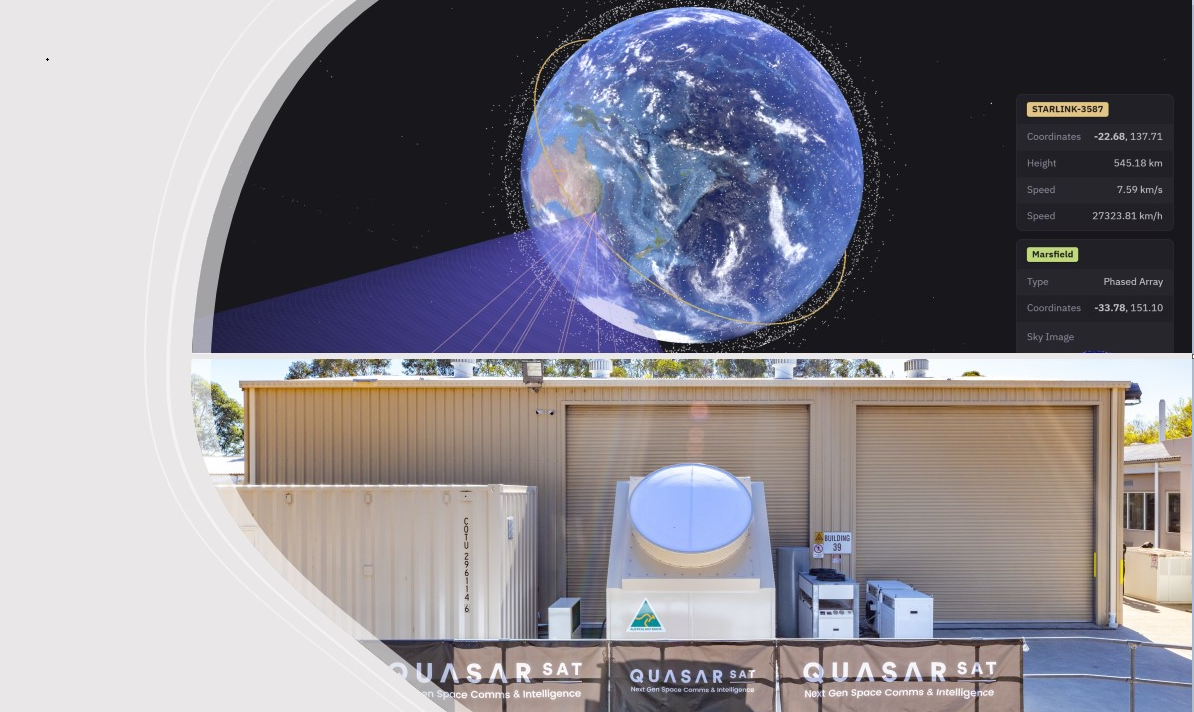Australian start-up Quasar selected by US Government-backed Catalyst Accelerator
Quasar’s world-first SDA capabilities recognised in a program that provides connections to government agencies, mentorship and business development opportunities
Sydney, Australia – February 26, 2024 – Australian start-up Quasar Satellite Technologies (‘Quasar’) has been selected as one of seven companies – and the only international organisation – to participate in the 13th Catalyst Accelerator, a program powered by the US Air Force Research Laboratory Space Vehicles Directorate (AFRL/RV).
The Catalyst Accelerator was created to enable and expedite the ability for nontraditional technology companies to become involved in the US national defence ecosystem. It offers connections to US government agencies, alongside mentorship and to fast track business development opportunities.
The 13th cohort is focused on Space Domain Awareness (SDA), bringing the selected participants into a collaborative setting to facilitate a lasting national impact. The SDA cohort is the first Accelerator established in partnership with The Space Domain Awareness Tools, Applications and Processing Lab (SDA TAP Lab).
The Catalyst Accelerator’s panel of judges selected Quasar due to its advanced phased array system which is considered to have high potential to benefit SDA. This is the result of its superior performance in detecting and characterising radio frequency (RF) signals from space for all-of-sky visibility with no blind spots.
“Our technology is unparalleled, featuring exclusive and patented intellectual property,” said Richard Singh, Chief Sales Officer at Quasar. “It is the culmination of over 12 years of extensive research and development in wideband RF arrays. Fully software-defined, our system can be designed for rapid deployment in forward-operating scenarios.”
“Our inclusion in the Catalyst Accelerator recognises our ability to provide unique insights into the SDA intelligence sector,” said Singh.
Maj Sean Allen, Chief of the SDA TAP Lab, in news release announcing the cohort, said, “The TAP Lab is partnered with Catalyst Campus to feed companies directly from the Catalyst Accelerator into the lab. They mature the business model, and the lab helps accelerate the product. This means companies are better positioned to build what the NSDC and Delta 2 need, and are more likely to make sales. Last week, I had the privilege of reviewing pitches for the Catalyst Accelerator. It was amazing to see the expertise of these startups. I learned a lot and am confident our partnership will ultimately improve the quality of commercial space battle management software.”
Quasar’s inclusion in the Catalyst Accelerator follows the successful December launch of its world-first SDA capabilities in Orlando, Florida.
Quasar has developed a state-of-the-art, fully digital multibeam phased array antenna, capable of simultaneously delivering SDA and satellite communications (SATCOM) from a single aperture, marking a revolutionary advancement in the field.
The ‘all-sky’ visibility capability brings unique insights in detecting and characterising RF signals from space, including uncorrelated tracks and anomalies. As a dual-use technology, it is a force multiplier in both commercial and defence sectors.
“We launched our world-first SDA technology with resounding success – the number of satellites in space is ballooning, and civil, commercial and government defence and intelligence agencies not only want their own stake in the space race, but all-sky visibility to see what the rest of the world is doing in orbit,” said Singh. “We have already engaged with key agencies in the US, Australia and other markets to share our initial data sets and analysis. “
Quasar’s technology is available to Five Eyes and Quad nations and their allies. The US is the company’s primary target market, alongside Australia, the United Kingdom, India and Japan.
##
About Quasar Satellite Technologies
Quasar was born in 2021 from a partnership with Australia’s national science agency, CSIRO, repurposing advanced technology developed over the past decade for radio astronomy. Quasar’s mission is to provide scalable, cost-effective ground station service solutions for space communications and space domain awareness.

